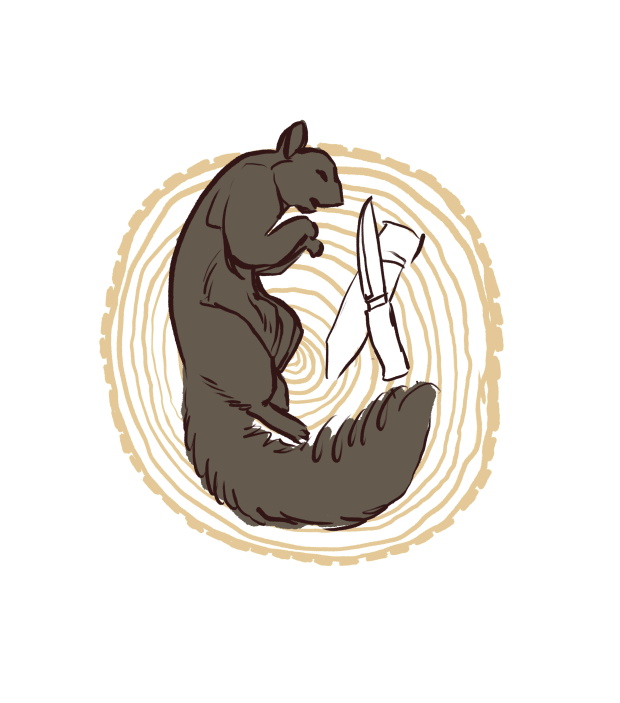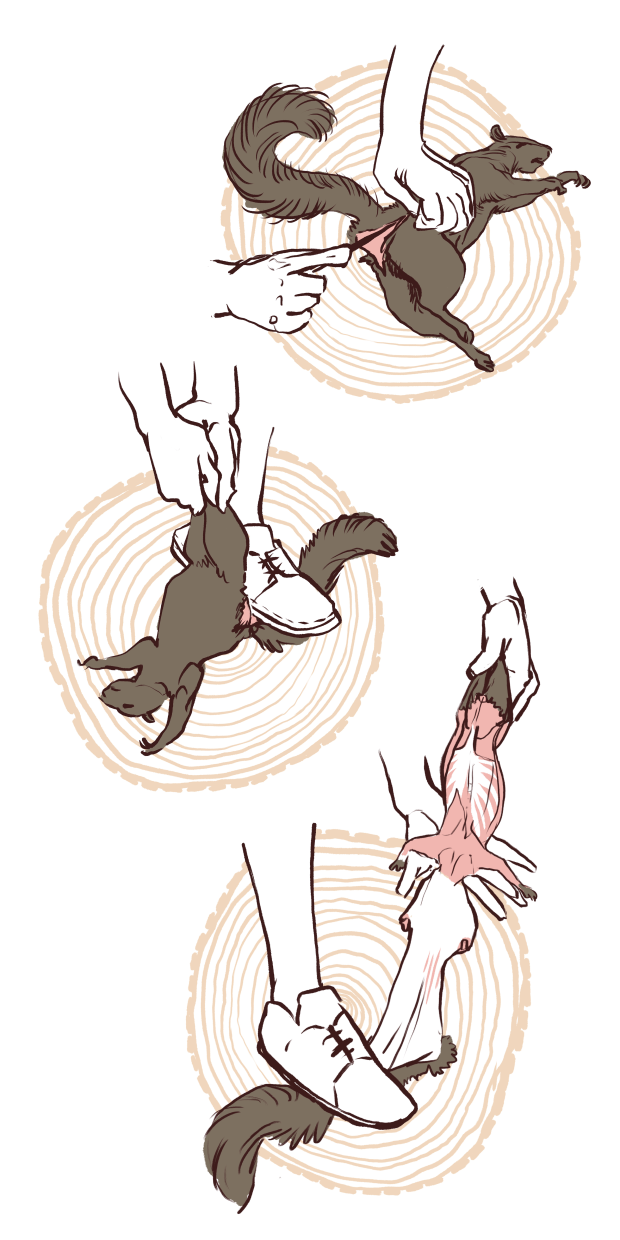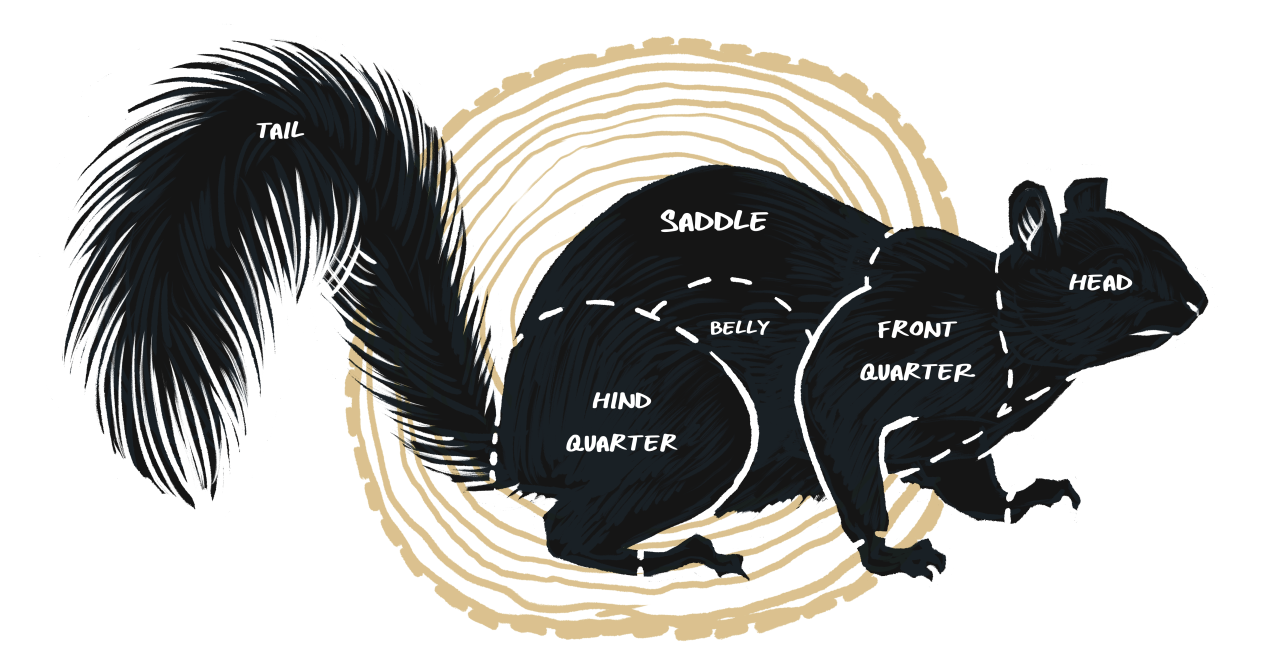As a chef and a native of the state known as “Wild and Wonderful” I’ve always had an affinity for foods that come from the forests and streams that inspired our proud moniker and gave rise to a noble heritage of living off the land.
Like many professional cooks, I recognize a long list of heroes who have influenced my work. I’m talking much more than celebrity chefs and high-profile restaurateurs: seed savers, traditional bakers, home cooks, and squirrel hunters—those who possess vast knowledge given by earlier tradition bearers, paying it forward without hesitation so that Appalachia’s living, breathing cultural heritage may be passed on by future generations.
A lifelong hunter, forager, and angler, my good friend Eddie Fletcher is one of those heroes. On an April morning several years ago, I visited him when he was harvesting ramps—wild leeks that pop up on north-facing mountain slopes each spring—on his woodland property. After several hours in cool drizzly weather, we retreated to the warmth of his Greenbrier County log cabin. The comforts of his rustic home were enhanced by the sounds of raindrops bouncing off a tin roof and tantalizing aromas wafting from a cast-iron Dutch oven atop a woodstove.
“I have some squirrels cooking on the stove today,” he said. “These are gray squirrels. You don’t cook them with fox squirrels. They don’t take as long to cook.”
As Eddie removed the lid from the Dutch oven, a cloud of steam emanated, and the aroma intensified. Beads of condensed liquid rolled off the lid one by one, landing on the stove’s hot black surface, where they immediately evaporated with a loud sizzle.
“This evening I’m going to fry ’em up, and we’re going to make squirrel gravy off the broth,” Eddie said as quartered portions of several squirrels parboiled. “There’s not much better than squirrel gravy. It’s the best gravy in the world.”

Wild-harvested nonaquatic animals can’t legally be served commercially, so you won’t find fried squirrel with gravy in West Virginia restaurants. But maybe that’s for the best. Squirrel doesn’t belong on a plate at an upscale restaurant. It belongs at a hand-carved wooden table, on a chilly day beside a woodstove, in a space where good friends tell hunting tales, share cooking techniques, and reinforce their desire to keep tradition alive.
Here I’ll teach you to how to skin and butcher a squirrel. I suppose I could also show you my favorite way to fry up tender squirrels paired with a decadent gravy, but that’s a lesson that can be learned easily elsewhere. The best piece of advice I can offer is to seek out and learn from your own Eddie Fletcher, someone who’ll inspire you with his or her endless knowledge of the woods, fascinating personal stories, and insistence on keeping mountain culture alive. When you meet that person, you’ll come to understand the difference between everyday squirrel gravy and the best gravy in the world.

Skin the squirrel:
- From the underside of the tail, cut through the tailbone at its base, toward the spine, but stop before cutting all the way through the skin on the other side. Be sure not to cut into the digestive tract, and avoid cutting through the muscle on either side of the tail. The point here is to leverage the tail to create a starting point from which the hide can easily separate from the carcass. A cut too deep into the back or leg muscles will rip apart some of the best meat on the squirrel and will make the skinning process even more difficult.
- Hold the squirrel upside down, firmly grasp the hind legs together with one hand, and step on the tail to keep it held in place.
- Slowly but steadily, pull the squirrel upward. This should pull the hide all the way up to the shoulders. With your index finger, separate the connective tissue between the head and the arms, allowing the hide to envelop the head and front feet completely.
- At this point, the back legs will still be covered. Run your index finger under the skin to free up enough of the back part of the hide for you to easily grip. Hold the squirrel by the upper body—arms and head together—and from the base of the thighs, pull the back part of the hide down the legs, all the way over the back feet.
- Cut off the head, then remove all four feet at the joint where the hide stops moving down the legs. I recommend a sturdy pair of butcher or game shears for this step. A solid hunting knife should have no problem cutting through a few small bones here and there, but doing so repeatedly will quickly dull the blade.

Gut the squirrel:
- With the squirrel on its back, pinch some of the belly muscle up, away from the guts. Make an incision near the groin area, and cut in a straight line, all the way up to the sternum. Keep the tip of the knife pointed upward to avoid puncturing the guts.
- With the shears, cut through the sternum, up to the neck, to open the chest cavity. Alternatively, you can completely remove the rib cage by cutting through the rib bones where they meet the back muscles. There’s little meat on the ribs, but if you plan to make a broth resulting in the best gravy in the world, you should hold on to them.
- No matter how you treat the rib cage, the intestines will spill out after you open the belly. With one or two fingers, reach into the open chest cavity and pull out the remaining organs. Squirrels are small animals, and some think the size of the organs doesn’t justify the effort to save them. But even for the tiniest of harvestable squirrels, the heart, liver, and kidneys are worth keeping to fry and add to your gravy.
- With the shears, make a cut on each side of the pelvis, freeing up the rest of the lower intestines and the exit point of the digestive tract.

Quarter the squirrel:
If you plan to fry the squirrel, it’s best to cut it up into five pieces. The meat-rich parts we’re after are the front legs and shoulders, the hind legs, and the backstraps. The rib cage and less-meaty parts of the back and belly are perfect for broth or stock.
- Remove the back legs: Take the knife and cut from the pelvis, inside the groin, around the point where each leg attaches to the squirrel’s lower body. Bend the leg backward toward the spine to snap the hip joint, then cut away any remaining tissue to remove the leg.
- Remove the front legs: Cut from the neck, down the outside the rib cage, under the arm and around the shoulder. Unlike the back legs, which can be separated by breaking and cutting around the joint, the front legs are attached by a thin collarbone. Cut through this bone with a knife or shears, and the leg should come free.
- Trim the backstrap: With all four legs removed, the last remaining prize is the backstrap, the tender back muscles on both sides of the spine between the shoulders and hips. Take the shears and cut out the ribs (skip this step if you cut out the rib cage in the gutting process); keep them for broth. Cut through the spine below the neck, and do the same just above the hips. In both cases, it will be easy to tell by touch where the meaty parts end and the bony, less-desirable sections begin; that is where to make the cuts.